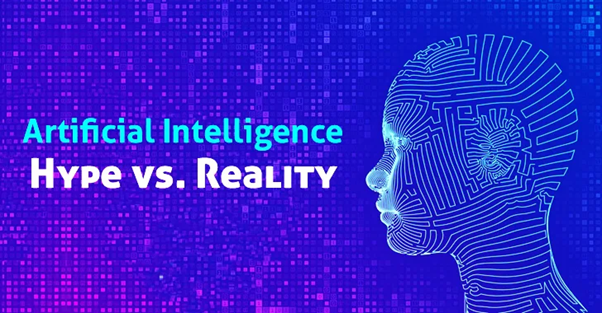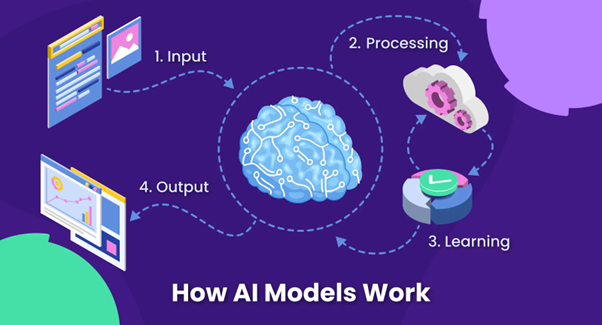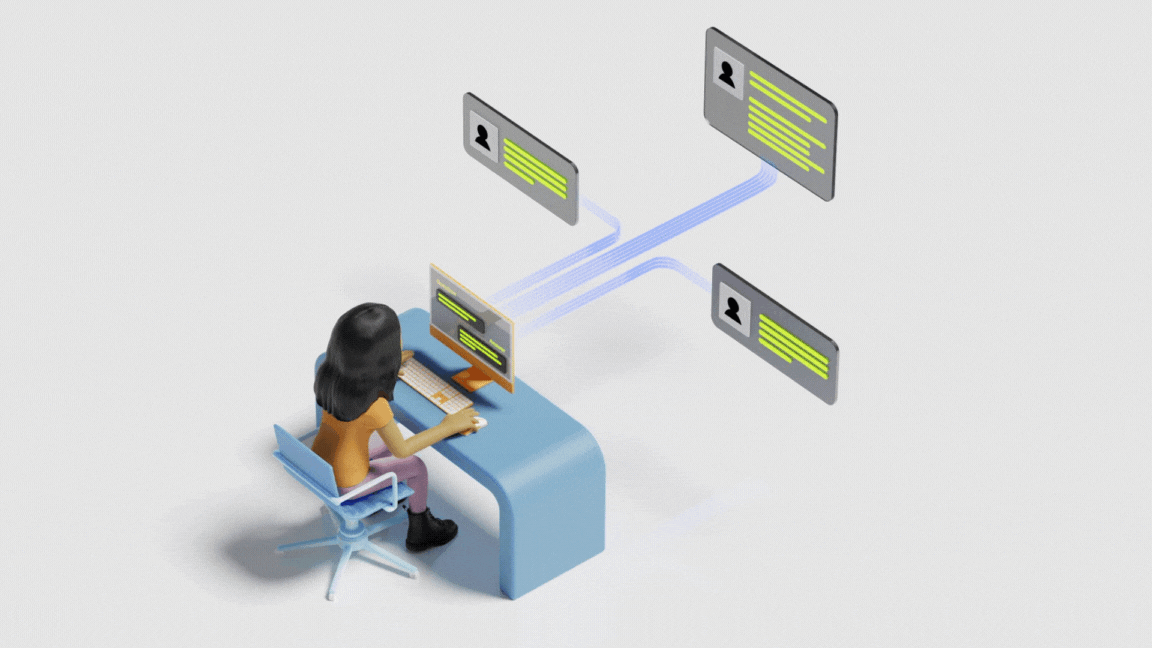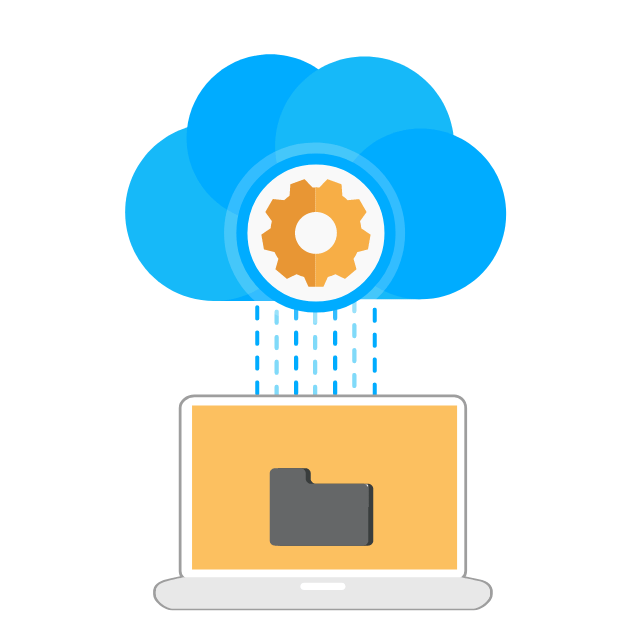Types of databaseAI Isn’t Magic—It’s Modeling: Here’s the Wild Truth Behind the BotsTypes of database

You keep hearing it, right?
AI is taking over everything. Writing code. Diagnosing diseases. Writing your emails (hello). And if you’re like most people, you’re probably thinking: How the hell does it actually work?
Spoiler: it’s not magic.
It’s AI modeling—the beating heart behind everything from ChatGPT to your Instagram feed. And if you’re building products, running a company, or just trying to not be left behind, this is something you really want to understand.
Let’s strip it down, no fluff, no jargon overload. Just the real story of what AI modeling is, why it’s so powerful, and how you can actually use it.
Let's start by getting one thing clear: what is an AI model?
Think of an AI model as an intern who is very smart.
It learns to find patterns over time by being shown a lot of examples, like pictures, words, and voice records. "Oh, this furry thing with a tail? "That's a cat." Also, "This tone of voice means the customer is frustrated."
It's not writing your own ideas. It's looking for trends and guessing what will happen based on those patterns.
This is what people mean when they say "AI wrote this": an AI model made it based on millions of other cases.
Not a soul. It's just good maths.

Training an AI Model = Teaching a Genius Toddler
Want to train an AI model?
Imagine sitting with a genius-level toddler who knows nothing about the world. You show her thousands—maybe millions—of flashcards. Some say “apple,” some say “banana,” and you keep telling her what’s what.
Eventually, she learns: red, round, stem = apple.
That’s AI training. Except the “toddler” is a powerful algorithm, and the “flashcards” are your labeled data.
And once it learns well enough, it can start making its own predictions—without your help.
That’s the moment AI modeling gets real.
Not All Models Are Built the Same (And That Matters A Lot)
Let’s talk types.
There’s not just one kind of AI model. Depending on what you want the AI to do, you’ll pick different modeling approaches. Here are a few to remember:
- Classification models – Great for labeling stuff: “spam or not spam,” “cat or dog,” “angry or happy.”
- Regression models – Predicting numbers: “What will our revenue be next quarter?”
- Generative models – The cool kids: these ones create stuff—text, images, music (hello ChatGPT and DALL·E).
- Reinforcement models – Think of game-playing bots or robots learning by trial and error.
Each one has its own learning style. Choose wrong, and your AI model might just become a very expensive failure.

Wait, So How Do You Build a Model?
Here’s where things get spicy.
- Collect data – No data, no model. You need good, clean, labeled data. Think: user reviews, purchase history, voice recordings—whatever fits your use case.
- Preprocess it – Data is messy. Like, “Why are there 45 ways to say ‘yes’ messy.” You clean it, normalize it, maybe even augment it.
- Choose a model architecture – Do you go with a simple decision tree? A deep neural net? Something pre-trained? Pick your brain weapon.
- Train it – You feed the data to the model, and it starts learning patterns. This is where GPUs get hot.
- Validate and test – You don’t test on the same data you trained it on. That’s cheating. You test it on fresh examples to see if it actually works in the wild.
- Tune it – If it sucks? You tweak settings (called hyperparameters), get more data, or try a new model entirely.
- Deploy it – Congrats. Your model is ready to serve live predictions, generate content, or solve real-world problems.
It’s not plug-and-play. It’s trial, error, and iteration. A lot of it.
What Can Go Wrong? Oh, So Much
Let’s be real: AI modeling can be a total dumpster fire if you’re not careful.
Some juicy failure cases:
- Bias: If your training data is biased, your model will be too. Train a hiring model only on past male applicants, and guess what? It won’t “see” qualified women.
- Overfitting: The model learns your training data too well. It memorizes, instead of generalizing. Like a student who aces practice tests but fails real ones.
- Underfitting: The opposite. Your model is too dumb to learn anything meaningful. Usually means your model’s too simple, or you didn’t train it enough.
- Poor data quality: Garbage in = garbage out. If your inputs are inconsistent, noisy, or mislabeled, your outputs will be nonsense.
Building AI models isn’t just a science—it’s an art. And most of that art is data curation.

Hot Take: Pretrained Models Are Changing the Game
Want to skip all that training and still use AI?
You can—thanks to pretrained models.
These are massive models trained by tech giants (think: GPT, BERT, DALL·E) on insane amounts of data. You don’t build them from scratch—you fine-tune them for your specific use case.
Think of it like this:
Training a model from scratch = building your own sports car from metal parts.
Fine-tuning a pretrained model = getting a Tesla and customizing the paint job.
A lot of startups and indie devs are doing crazy-good things with pretrained models. Because they give you power without the infrastructure nightmares.
AI Modeling + Real Business = Magic (When Done Right)
Let’s bring this down to Earth.
AI modeling isn't just for labs or billion-dollar tech firms. It's for you—the founder, product manager, developer, marketer.
Here’s how real people are using it:
- E-commerce: Predict what customers want before they search for it.
- Healthcare: Spot diseases faster with medical image models.
- EdTech: Create custom learning paths with student behavior models.
- Finance: Flag fraud in real-time before it hits your account.
The possibilities aren’t “someday.” They’re now. And understanding AI modeling is how you unlock them.
So You Want to Get Started - Here’s Your Action Plan
No, you don’t need a PhD to use AI modeling. But you do need a game plan.
Here’s how to dip your toes in:
- Start with a no-code tool like Teachable Machine, Lobe, or Pinecone if you’re not a developer.
- For devs: play with TensorFlow, PyTorch, or Hugging Face.
- Explore datasets on Kaggle or Google Dataset Search.
- Try fine-tuning GPT models on your own data via OpenAI API.
- Join AI communities on Discord, Reddit, or Twitter. The fastest way to learn is by asking dumb questions out loud.
This space is moving fast. You don’t have to be perfect. You just have to start.
Final Take: AI Modeling Isn’t the Future - It’s the Foundation
Let’s not kid ourselves.
AI isn’t just hype. It’s the infrastructure layer of the next decade. And modeling is where it all begins.
Understand AI modeling, and suddenly you’re not a spectator in the revolution. You’re building it.
So next time someone drops “AI” in a meeting like it’s a black box of wizardry, lean in and ask:
“Cool. But what kind of model are we talking about?”
Because now?
You actually get it.



